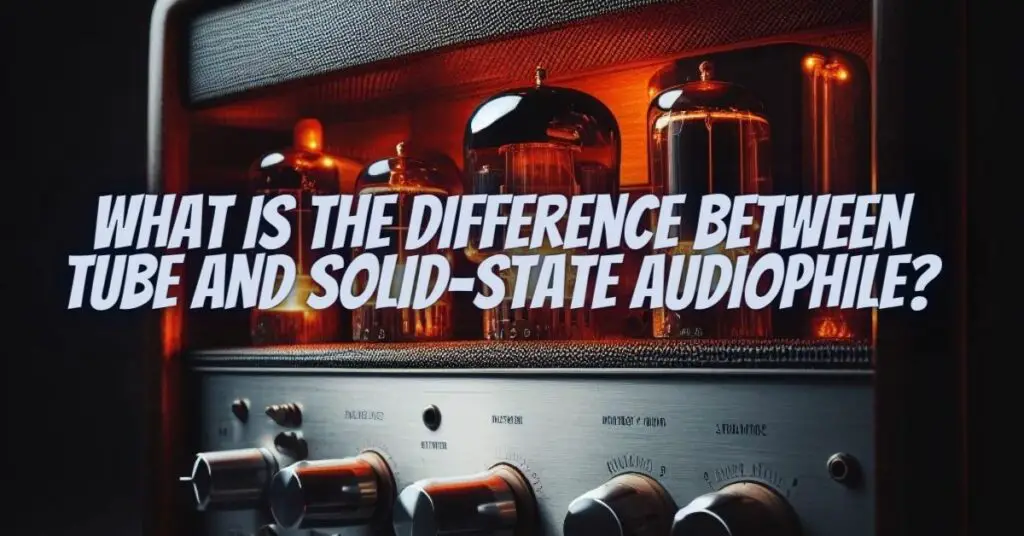The world of high-fidelity audio is a vast and diverse landscape, home to both tube and solid-state audiophiles, each with their own set of preferences, principles, and opinions. At the heart of their divergence lies the choice between two primary types of audio amplification technologies: tube (valve) amplification and solid-state amplification. In this article, we will delve into the differences between tube and solid-state audiophiles, exploring their distinct sound preferences and the factors that influence their choices.
I. The Basics of Tube and Solid-State Amplification
Before diving into the differences, it’s crucial to understand the fundamental principles behind tube and solid-state amplification:
- Tube Amplification: Tube amplifiers, also known as valve amplifiers, use vacuum tubes (electron tubes) to amplify audio signals. They are known for their warm, harmonic-rich sound and classic vintage appeal. Tube amplification relies on the concept of harmonic distortion, which is often described as “musical” or “colorful.”
- Solid-State Amplification: Solid-state amplifiers, on the other hand, use transistors and semiconductor components for amplifying audio signals. They are prized for their precision, low distortion, and reliability. Solid-state amplification aims for a clean, accurate, and linear reproduction of the audio signal.
II. Sound Preferences of Tube Audiophiles
Tube audiophiles tend to favor the unique characteristics of tube amplifiers:
- Harmonic Distortion: The hallmark of tube amplification is harmonic distortion, which introduces even-order harmonics to the sound. Tube audiophiles often appreciate this distortion for its warm, vintage, and musically pleasing qualities.
- Tonal Warmth: Tube amplifiers are known for adding a warm and organic tonal character to the audio. Many tube audiophiles find this warmth to be inviting and emotionally engaging.
- Subjective Sound: Tube audiophiles often emphasize the emotional and subjective experience of music. They value the subtle colorations and nuances introduced by tubes, and they often prioritize the emotional connection with music over technical accuracy.
III. Sound Preferences of Solid-State Audiophiles
Solid-state audiophiles, on the other hand, appreciate the qualities of solid-state amplification:
- Accuracy and Precision: Solid-state amplifiers are lauded for their precision and linearity. They aim to reproduce the audio signal faithfully, minimizing distortion and coloration.
- Transparency: Solid-state amplifiers are known for their transparency, delivering a clear and uncolored representation of the audio. This quality is appreciated by those who seek accuracy and clarity.
- Technical Objectivity: Solid-state audiophiles often prioritize technical accuracy and objectivity in sound reproduction. They place value on measurement-based quality and the scientific aspects of audio reproduction.
IV. The Quest for Perfection
It’s important to note that both tube and solid-state audiophiles share a common quest: the pursuit of perfect sound quality. However, their definitions of perfection differ significantly, with tube audiophiles focusing on the emotional and subjective qualities of sound, while solid-state audiophiles prioritize technical accuracy.
V. Crossover and Hybrid Preferences
In recent years, there has been a growing interest in hybrid and crossover designs that combine both tube and solid-state technologies. These designs aim to bridge the gap between the two worlds, offering the warmth of tubes and the precision of solid-state in a single amplifier.
The differences between tube and solid-state audiophiles primarily revolve around their sound preferences and priorities. Tube audiophiles tend to favor the warm and harmonically rich qualities of tube amplification, while solid-state audiophiles appreciate the precision and transparency of solid-state technology. Ultimately, the choice between tube and solid-state amplification is a matter of personal preference and the unique sound experience that each listener seeks to achieve. Both worlds have their merits, and the diversity in audiophile preferences only enriches the audio community as a whole.


